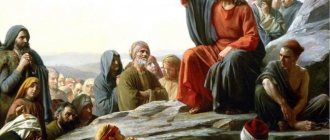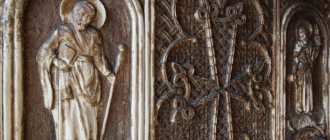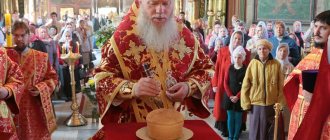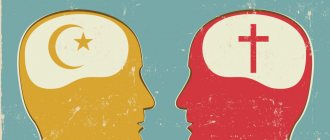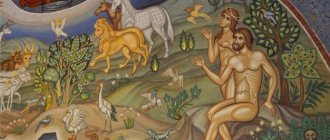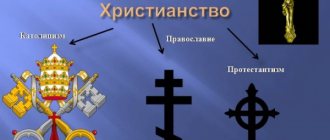We adopted Christianity as the official state religion in 301. However, this does not mean that there were no Christians in Armenia before. The founders of the Armenian Church are the apostles Thaddeus and Bartholomew, disciples of Christ. This is why our church is called Apostolic . Apostle Thadeus spread Christianity in Armenia in 35-43, Bartholomew in 44-60. It is easy to calculate that Thaddeus was in Armenian lands two years after the Ascension of Christ .
Etchmiadzin Monastery
Adoption of Christianity as the state religion
Before accepting Christianity , the king of Great Armenia, the pagan Trdat III, sentences his comrade-in-arms Grigor , who professes Christianity, to imprisonment, kills 40 Christian virgins because one of them did not want to marry him, and so on. Then he becomes seriously ill. His sister has dreams that only Grigor, who is imprisoned, can heal his brother. The latter is released. He first buries the bodies of 40 virgins killed by the king, then Christianity for 66 days , and the king’s illness passes. The king and his entire court receive baptism, then accept Christianity as the official state religion . You won’t believe it, but all of the above happened in 1 year. From 300 to 301.
Saint Hripsime Church
King Abgar
It is believed that the Armenians first became acquainted with the teachings of Christ during his lifetime in the 1st century AD.
Armenian king Abgar V Ukkama
, a close relative of Tigran the Great himself, who ruled during the time of Jesus in the Armenian Kingdom of Edessa in the south of modern Turkey, according to ancient apocryphal sources, was stricken with leprosy.
Asking for healing, Abgar entered into correspondence with the Son of God.
And he even invited Jesus to his country, promising an official residence here. Christ, however, refused, citing the connection of his mission only with Jerusalem. However, he sent the Apostle Thaddeus here, healed and baptized Abgar himself, and spread Christianity in his possessions...
However, there is not enough concrete documentary evidence of this fact. Therefore, the fact of the baptism of the first Armenians already in the 1st century AD remains in question.
Historical places associated with the adoption of Christianity in Armenia
Much of the above took place in what is now Armenian . Those interested can visit the sites of these historical events.
- Khor Virap , the monastery where Gregory the Illuminator was imprisoned. Here anyone can go down to the dungeon where Grigor was kept;
- Church of St. Hripsime , where Hripsime, one of the 40 virgins whom the king wanted as his wife, was tortured and killed;
- Church of Saint Gayane , under which are the bodies of the remaining virgins killed by the king;
- Etchmiadzin Monastery , built by King Trdat and Grigor in 303 on the site where Christ appeared to him in a dream of Gregory the Illuminator.
As we see, Christianity was adopted by Armenians during the life of Christ. Confirmation of this is easy to find in our cultural and artistic monuments. The adoption of Christianity as the state religion in 301 was a confirmation of the faith of our people by its government.
Christening of the country
Christianity was adopted in Armenia already in 301, although later researchers claim that this happened in 314-315. A very significant and even major contribution to this was made by Gregory the Illuminator, who began to be considered the first Catholicos of the Armenian Church (from 330 to 326), and a king named Trdat the Third Great, who ruled from 287 to 330, considered before by his conversion to religion, a cruel persecutor of Christians.
Yandex pictures
The works of historians who wrote about Armenia and its people, dating back to the fifth century, say that back in 287, King Trdat the Third arrived in the country to return the throne of his father. In the temple of the estate called Eriza, he made a sacrifice to the goddess Anahit. Gregory, who belonged to the royal associates, being a Christian, expressed his refusal to participate in such a ritual action. The king also received news that Gregory was the son of the one who killed his father, named Khosrov the Second. As a result, Gregory ended up in the Artashat dungeon, intended for death row prisoners.
Important: this place is known as Khor Virap, which is translated from Armenian as “deep dungeon”. A chapel and monastery were later built there and turned into a place of pilgrimage.
After this, the king issued several decrees, which stated that those Christians who were taking refuge should be put to death, and all others who were in Armenia should be placed under arrest, their property confiscated. It is not known exactly how long Gregory spent in prison, but legend speaks of 13 years. This shows that the state at that time saw Christianity as a huge danger.
The release of Gregory was influenced by a very inexplicable event, which later led to the adoption of Christianity in Armenia - the death of the holy virgins called Hripsimeyanki. Data differ on how many there actually were. In general, the legend says that the girls, who were Christians and born in Rome, in an attempt to hide from the persecution of the emperor named Diocletian, were able to escape to the East. They found refuge near the city of Vagharshapat.
Important: this city was then considered the capital of Armenia.
The aforementioned king Trdat was captivated by the lovely appearance of the maiden Hripsime, wanted to make her his wife, but encountered her resistance and eventually issued an order to kill all the Hripsime maidens as martyrs.
The order was carried out: all the virgins died, but one of them, Nune, managed to leave the country and settle in Georgia, where her Christian preaching continued. As a result, this virgin became famous as the Equal-to-the-Apostles Saint Hripsime Nino, in whose honor a church was erected, which became a masterpiece of the Middle Ages. This terrible execution of the virgins contributed to the fact that the king was greatly shocked, as a result of which he developed a serious nerve disease, then called “swine disease.” It’s not for nothing that sculptors represented the Tsar with the head of a pig. His sister named Khosrovadukht more than once dreamed that Gregory could heal him, but at that time he was in prison. After so many years, it was decided to release Gregory from there to help the king and receive him with triumph in the capital. He immediately buried the relics of the executed virgins. After Gregory preached for 66 days, he still healed the king himself.
It so happened that the previously carried out persecution of Christians by various political figures, including by Trdat, contributed to the fact that the sacred hierarchy in the country was actually destroyed. But now the time has come for restoration. To be ordained a bishop, Gregory visited Caesarea in triumph. There he was ordained by the Cappadocian bishops, led by Leontius of Caesarea. In turn, the bishop of Sebastia named Peter elevated Gregory to the episcopal throne. The ceremony was held far from the capital, in the city of Ashtitat.
Important: the main episcopal see of Armenia has been there since ancient times, which was founded by none other than the apostles themselves, close associates of Jesus Christ.
Spread of the Armenian Church
In the Promised Land, that is, on the territory of modern Israel, over seventy Armenian churches were built already from the sixth century, and in 638 the Armenian Patriarchate was founded, which united and became the head of all Eastern Orthodox dioceses. These are the Ethiopian, Syrian and Coptic dioceses.
For almost two thousand years, a miracle has happened every year - the descent of the Holy Fire, which takes place on the eve of Easter in the Church of the Holy Sepulcher in Jerusalem. From among the bishops of the Armenian Gregorian Holy Apostolic Church, a clergyman is annually elected who will be entrusted with receiving the Holy Fire.
Thaddeus and Bartholomew
The Apostles Thaddeus and Bartholomew, almost independently of each other, visited Greater Armenia itself in the 1st century, converting a lot of people here to Christianity: ordinary people, priests and nobles.
Thaddeus himself was either executed by the pagans in Armenia, or he died peacefully somewhere in the Middle East. Bartholomew, who preached throughout Greater Armenia, was, according to legend, killed somewhere in Baku. Again, pagans.
Alphabet for the word of God
Mesrop Mashtots, who is revered by Christians as a saint, created the first and only Armenian alphabet in 404 AD. At the time of its creation, it was recognized as the most modern and already then it used the classical writing style - from left to right.
Together with his disciples-followers, Mashtots translated the Bible into Armenian; his book became known throughout the world as the “Queen of Translation” for the perfection of the translation of the original source.
Mashtots, fulfilling his Christian duty, created an alphabet for Georgians and Caucasians Alans.
Now in Yerevan, in the Repository of Ancient Manuscripts named after Mashtots, more than 20 thousand handwritten texts are stored, which Mashtots himself began to collect. This collection of manuscripts is of great historical and cultural value for the peoples of the whole world.
Answers@Mail.Ru: Are Armenians Catholics or Orthodox? or who?
Armenians have their own CATHOLICOS... So draw a conclusion WHO they are
We have our own faith. Armenian Apostolic Church. (In a word, the majority are Gregorians, but with slightly different customs) ARMENIAN AP'OSTOL CHURCH, one of the oldest Christian churches, adheres to the Monophysite direction of Christianity (See Classification of religions). Members of this church are usually called Armenian Gregorians. The latter name is due to the fact that the founder of the Armenian Apostolic Church is considered to be Gregory the Illuminator (c. 240-332), who converted King Tiridates III of Armenia to Christianity in 301 (according to legend, the first Christians appeared in Armenia already in 34, after the Apostle Thaddeus visited this country , however, reliable information about Armenian Christians dates back to the 2nd century). And Armenia became the first country in the world where Christianity was declared the state religion. At the beginning of the 5th century. monk Mesrop Mashtots, together with Catholicos Sahak, translated the Bible into Armenian (apparently from Old Syriac). The independent Armenian Gregorian Church, which rejected the decisions of the Ecumenical Council of Chalcedon, has existed since 506. The doctrine of the Armenian Apostolic Church is similar to the doctrine of other Monophysite churches. Armenian-Gregorians accept the decisions of the first three ecumenical councils, but do not recognize the decisions of the subsequent ones.
...they are Orthodox of a special kind... they have their own rules in their faith...
Armenian Church - AAC (Armenian Apostolic Church) - Armenians Monophysites Apostles. but there are more than 1 million Catholic Armenians and more than 1.2 million Orthodox Christians. Data is inaccurate.
The absolute majority of Armenians profess monophysical Christianity and belong to the Armenian Apostolic Church (A.A.Ts.). There are Catholics among the Armenians. In Russia and Georgia there are Orthodox Christians, and evangelists have appeared in Armenia. There are more than 1 million hidden Armenians living in Turkey who profess Islam, some of whom have returned to Christianity in recent years. In the northeast of Turkey there lives a large group of Hemshil Armenians who converted to Islam in the 16th century, but they consider themselves Armenians. According to the census conducted by the Hemshil initiative group, more than 3 million Hemshil Armenians were counted in Turkey.
Heretics - because Monophysites. They did not accept the resolutions of the Holy Council of Chalcedon and went into schism. Raskolniki. But Christians, as well as Copts, are also Monophysites.
After the new invasion of their country by the Persians in 428 and the inclusion of Armenia into the Persian region, the Supreme Patriarch Isaac the Great (378-439) made efforts to create external resistance to the occupation of foreigners, strengthening the spirit and self-awareness of the Armenians through church reforms. Protection was especially shown through Mesrob Mashtots, who created the Armenian alphabet of 36 letters, and thus laid the foundation for the development of Armenian philology. Mesrob, the creator of the national language of the Armenians, later became the Catholicos (patriarch) of Armenia. He translated the Holy Scriptures and the Fathers of the Church, mainly from the Greek and Syriac originals. Mesrob died in 440, 11 years before the IV Ecumenical Council in Chalcedon, which contained a creed that established a division in the relationship between the Armenian Church and the Orthodox Church. Due to the enslavement of Armenia by the Persians 42 isolation and influence of Syrian bishops. For reasons beyond their control, they could not come to the IV Ecumenical Council and they were not even informed on time for the same reasons, and they either became stubborn, or due to human weakness they were simply offended that they accepted the dogmas without their presence. Most likely, the politics behind the scenes is not God’s will, Satan restrained it. Syria and Palestine at that time were a hotbed of all sorts of heresies. Muhammad did not master the teachings, but picked up fragmentary knowledge from all the rumors of heresies and it turned out that he came out of the Old Testament with suggestions from the outside. The Armenians are an ancient, long-suffering people, but their mentality in recent times has been influenced by the Islamic-Arab sense. It is quite possible that they will re-realize the fact of the dogma and the union with the Orthodox Church; the contradictions were papal, which was rejected by the Orthodox Church in the 12th century (including Rus', which was baptized much later than Armenia in 988). Katolox - in the meaning of primate.
Armenian heretics, Monophysites! Everything about them is fake, even their faith.
I don’t know who all Armenians consider themselves to be? I consider myself Orthodox!
Armenians are atheists. Celebrate the pagan holiday Vardavar
The Orthodox and Catholic churches do not accept them as Christians. Gregorian faith is different from Christian faith
The most correct answer was from the one who wrote about the fact that the majority of Armenians belong to the Armenian Apostolic Church, there are Armenians and Orthodox, there are also Catholics. I, myself, am an Armenian Catholic, baptized in the Catholic Church (and my parents and grandparents, and further up the tree, were all Catholics), as well as Orthodox Armenians, baptized in Orthodox churches. Both Catholics and Orthodox are CHRISTIANS!)
LISTEN WHEN ANSWER STUDY ON THE INTERNET ARMENIANS - ARMENIAN APOSTOLIC ORTHODOX ORTHODOX CHURCH ARMENIANS - ORTHODOX ACCEPTED THE FIRST THREE Ecumenical Councils AND DISAGREED WITH OTHERS IMPOSED BY ROME THE GREEKS ACCEPTED AND FOLLOWED THEM THE RUSSIANS AND THE ARMENIANS REMAINED ORTHODOXY BEFORE THE CHALKEDONIAN ORTHODOXY SO THE ARMENIANS ARE ORTHODOX AND NOT ANYTHING MONOPHYSITES ARE THE LIES OF SOME GREEK AND RUSSIAN FALSE POPS WE ARE ORTHODOX ARMENIANS AND NOT FALSE POPS TO TELL THE ARMENIANS WHAT AND HOW AND THE OFFICIAL ROME AND THE GREEK OFFICIAL CHURCH HAD ACCEPTED THE ARMENIANS WITH THEIR BEFORE KHALKI A LONG TIME AWAY DON ORTHODOXY
Fuck... I'm crazy... when even the Armenians don't know that their Armenian Apostolic Orthodox Church is not monophysicists!!!! The AAC denies Monophysitism as a heresy.. MIAPHISTISM in the AAC.. about the double only-begotten essence of Christ... Damn, at least open a textbook.. Wikipedia or something... or better yet, go to an Armenian temple and ask there.. otherwise they’ll write something like that for you... and remember there is no difference whether you eat leavened bread or unleavened bread, whether you dilute the wine or not.. believe with your soul or don’t write stupid questions PS VIKTOR KUZMICHEV, PLEASE GO OUT THE WINDOW IF YOU THINK THAT CATHOLICOS AND CATHOLICS HAVE SOMETHING IN COMMON EXCEPT THE GREEK ROOT IN A WORD.
touch.otvet.mail.ru
